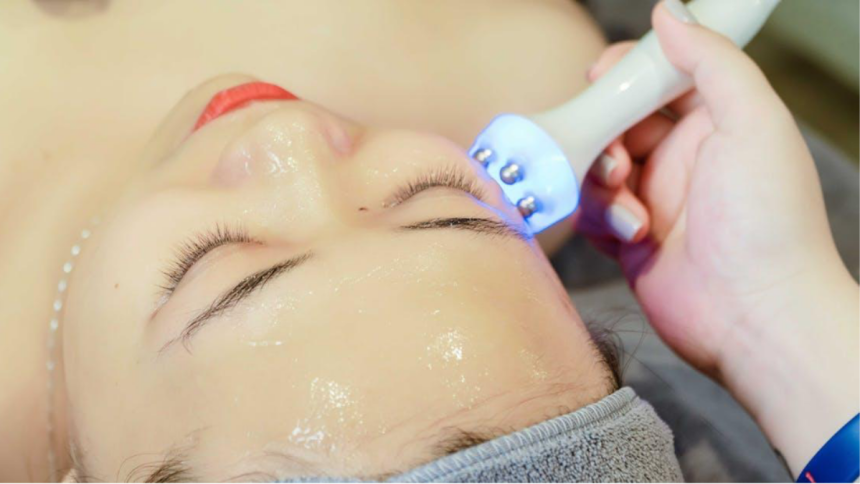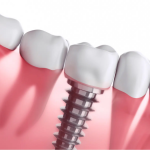When it comes to skincare, innovation never slows down, and one of the most fascinating advancements is LED light therapy. This cutting-edge treatment uses specific wavelengths of light to target skin concerns like acne, fine lines, and discoloration. But how does shining light on your skin actually work? It turns out, there’s solid science behind it, and it’s revolutionizing how we approach skin health.
LED treatments aren’t just a passing trend—they’re backed by research from trusted sources like the American Academy of Dermatology (aad.org). From red light for collagen production to blue light for acne, each color penetrates the skin differently, offering unique benefits. Whether you’re seeking a non-invasive way to rejuvenate your skin or curious about the science behind the glow, LED therapy has become a game-changer in modern skincare. Let’s explore how this technology is transforming the way we care for our skin.
Understanding The Science Of Light
Light therapy leverages specific wavelengths to target skin concerns. This method capitalizes on visible and infrared light, creating non-invasive treatment options for improved skin health.
What Is Light Therapy?
Light therapy uses concentrated wavelengths to penetrate the skin’s layers and promote healing. It includes visible and infrared light, which deliver energy to cells, supporting natural repair processes. For instance, specific wavelengths like blue light (415 nm) combat acne by targeting bacteria, while red light (630-700 nm) aids in collagen production, reducing fine lines and promoting elasticity. Unlike UV rays, LEDs used in light therapy emit non-damaging wavelengths, making it safe for skin application. Treatment intensity and wavelength determine the therapeutic effect, making it versatile for dermatological conditions.
How LED Technology Works
LED technology, utilized in devices like a red light face mask, operates by emitting photon energy absorbed by skin cells. The absorbed light activates chromophores, enhancing cellular metabolism and generating adenosine triphosphate (ATP), which fuels repair. Red light, in particular, penetrates deeper layers, targeting fibroblasts to boost collagen and elastin synthesis. Blue light remains near the surface, neutralizing acne-causing bacteria. Once light interacts with tissues, it triggers biochemical processes that accelerate cellular rejuvenation. LED treatments are safe, and when combined with different wavelengths, they offer multipurpose skin benefits for all types.
Benefits Of LED Treatments For Skin Health
LED treatments offer targeted benefits for various skin conditions by utilizing specific wavelengths of light. These therapies are safe, non-invasive, and effective for improving skin health.
Targeting Skin Concerns
LED light therapy precisely addresses issues like acne, wrinkles, and hyperpigmentation. Blue light eradicates acne-causing bacteria, minimizing breakouts. Red light, often used in a red light face mask, reaches deeper layers to combat signs of aging by enhancing cellular repair. Studies show that combining different wavelengths increases efficacy in treating multiple concerns simultaneously. This versatility makes LED therapy suitable for diverse skin types and conditions.
Promoting Collagen Production
Red light wavelengths, ranging from 630 to 700 nm, stimulate collagen synthesis. Collagen rejuvenates the skin’s structural integrity, reducing fine lines and improving elasticity. For example, red light face mask devices maintain continuous emission to penetrate the dermis efficiently. Regular use promotes even texture and firmness, visibly enhancing skin over time. Clinical research supports these outcomes, linking red light exposure to accelerated tissue repair processes.
Reducing Inflammation
LED light reduces inflammation by calming irritated skin and supporting the body’s natural healing mechanisms. Red and near-infrared light soothe conditions like eczema and rosacea by improving blood flow and reducing oxidative stress. Anti-inflammatory effects from these treatments also help post-procedure recovery, such as after chemical peels. By mitigating redness and irritation, LED therapy restores skin balance effectively.
Types Of LED Light And Their Effects
LED light therapy offers diverse benefits, with each light type serving a specific function based on its wavelength. These treatments address distinct skin concerns, enhancing overall skin health.
Red Light Therapy
Red light therapy utilizes wavelengths ranging from 630 to 700 nm to penetrate deep into the dermis. It stimulates collagen and elastin production, reducing fine lines, wrinkles, and sagging skin. This therapy also boosts cellular repair and improves blood circulation, which supports better skin texture and firmness. I often recommend red light face masks for at-home use as a convenient way to target aging or damaged skin. Research highlights that red light therapy is particularly effective for enhancing skin elasticity and healing post-inflammatory marks or scars, making it a staple in rejuvenation treatments.
Blue Light Therapy
Blue light therapy operates at a wavelength of approximately 415 nm, targeting acne-causing bacteria on the skin’s surface. It destroys P. acnes bacteria while diminishing oil production in the sebaceous glands, reducing breakouts and inflammation. Blue light benefits those prone to persistent acne or blemishes while helping to calm redness and irritation. Dermatologists frequently incorporate blue light treatments into acne care routines, illustrating its efficacy. With consistent use, this non-invasive therapy leads to clearer skin by preventing future infections and calming flare-ups.
Green And Yellow Light Therapy
Green light therapy (around 525 nm) primarily reduces redness and discoloration, targeting hyperpigmentation and uneven skin tone. It inhibits melanin production and lightens dark spots, making it valuable for sun-damaged or blotchy skin. Yellow light therapy (around 570 nm) focuses on repairing damaged skin and stimulating lymphatic flow. It supports wound healing, alleviates redness, and reduces swelling, benefiting individuals recovering from conditions like rosacea or eczema. I find green and yellow light serve complementary roles in achieving an even-toned, radiant complexion without invasive methods.
Are LED Treatments Safe And Effective?
LED treatments have gained recognition for their safety and efficacy in addressing various skin conditions. Their non-invasive nature and use of specific wavelengths make them suitable for a wide range of skin concerns.
Scientific Research And Findings
Studies indicate that LED light therapy is both safe and effective when applied correctly. Research published by the American Academy of Dermatology highlights the benefits of red light (630-700 nm) in collagen stimulation, improving skin elasticity and reducing wrinkles. Concurrently, blue light (415 nm) has proven efficacy in targeting acne-causing bacteria, minimizing breakouts without compromising skin health. These treatments are free from harmful UV radiation, ensuring non-damaging exposure. Dermal absorption of LED wavelengths promotes cellular repair processes, which is corroborated by several clinical trials focusing on outcomes like improved texture and clearer skin. Additionally, FDA-approved devices such as red light face masks ensure safety compliance for professional and at-home use.
Comparing Professional And At-Home Devices
Professional LED treatments, administered by licensed dermatologists, offer higher-intensity wavelengths for quicker results. Devices used in clinics generally provide a more concentrated exposure, ensuring precision in targeting skin concerns like deep wrinkles or severe acne. On the other hand, at-home devices like red light face masks are designed for convenience and safety, delivering lower-intensity yet effective treatments. While at-home devices require consistent use over time, professional sessions often show noticeable results within a few treatments. User safety is a primary consideration for at-home options, with built-in features like timed light emission and ergonomic designs. These devices cater to individuals seeking manageable, ongoing skin health solutions in their daily routine.
Choosing The Right LED Treatment
Selecting the most suitable LED light therapy depends on skin concerns, treatment goals, and device capability. Understanding wavelength-specific benefits ensures optimal results.
Factors To Consider
Identifying the skin concern is crucial when deciding on a treatment. For example, red light therapy targets aging signs by enhancing collagen and elastin production, while blue light effectively addresses acne by eliminating bacteria. Device type matters, too. Professional LED treatments offer high-intensity wavelengths for quicker improvements but require clinic visits, whereas at-home devices, such as a red light face mask, provide convenience and lower-intensity DIY options. Checking for FDA approval ensures safety and performance standards. Frequency of use also impacts results; at-home therapies often demand consistency over time, while professional devices yield faster outcomes. Lastly, consider skin sensitivity. Some conditions might benefit from adjustable intensity features in certain devices.
Avoiding Common Mistakes
Using an incorrect wavelength can limit treatment effectiveness. For instance, red light is unsuitable for acne-related issues; blue light works better. Overuse may lead to skin irritation, even with devices like red light face masks; follow manufacturer guidelines for safe application. Skipping pre-treatment steps, such as cleansing the skin, impairs light absorption and reduces benefits. Expecting instant results from lower-intensity at-home devices leads to mismanaged expectations, as consistency delivers progress over weeks. Choosing uncertified or unregulated devices increases risks, compromising safety and results. Always confirm FDA approval before purchasing a device to avoid ineffective or harmful treatments.
Lynn Martelli is an editor at Readability. She received her MFA in Creative Writing from Antioch University and has worked as an editor for over 10 years. Lynn has edited a wide variety of books, including fiction, non-fiction, memoirs, and more. In her free time, Lynn enjoys reading, writing, and spending time with her family and friends.















